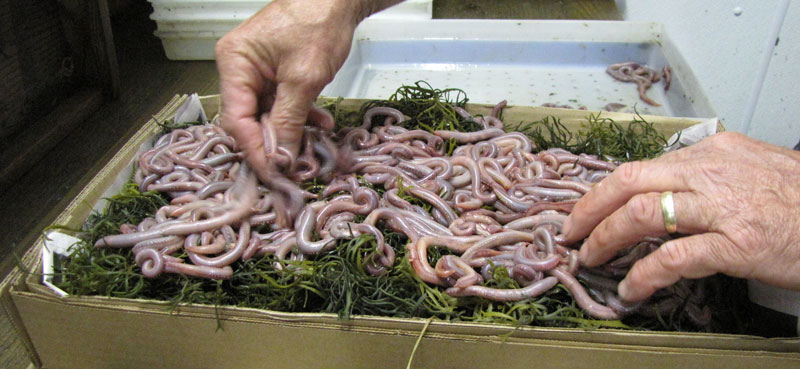Principal Investigator: Robert Wieland, Main Street Economics, LLC
Years Funded: 2016-2017
Project Description:
We will evaluate the economics of the commercial movement of bloodworms from sources along the Maine coast to the Chesapeake Bay region of the Atlantic coast and worldwide. Building on earlier research into the ecological and social aspects of the trade in bloodworms and, in collaboration with researchers involved in this earlier work, we will expand the previous research by considering the economic aspects of risks and risk reductions in the bloodworm trade.
We propose evaluating two levels of costs: first the monetized cost of ecological impacts of an introduction (i.e., the scenario in which no attempt is made to mitigate risk of introduction), discounted by relevant probabilities and, secondly, as the costs incurred by producers and consumers when risk mitigating practices are implemented. Several approaches have been proposed for reducing incidental biota in the shipment of live bloodworms and the likelihood of unintended introductions. Estimating the cost of implementing those approaches will be a project activity, but we will use findings from earlier bloodworm research of the efficacy of the evaluated risk reduction practices.
We will consider cost effects in the wider context of both factor and product markets. In factor markets, we will evaluate the impact of changes in packing material on people who currently earn livelihoods supplying that packing material. In product markets we will evaluate the potential for welfare effects in markets for recreational fishing.
We will provide useful information to policy-makers about cost effectiveness in AIS risk management and will contribute to the growing AIS economics literature. This research is relevant to the Mid-Atlantic Panel on Aquatic Invasive Species (MAPAIS) with regard to the panel’s focus on vector management and prevention as key to protecting against the introduction of unwanted species.
Publications:
Naked in trays: How the trade in live marine baitworms could decrease species invasions. 2018. Management of Biological Invasions.
Some economic considerations of the bloodworm trade’s potential as an AIS vector. 2017. White paper.
Photo: Bloodworms (Glycera dibranchiate) Credit: Amy Fowler, Smithsonian Environmental Research Center

